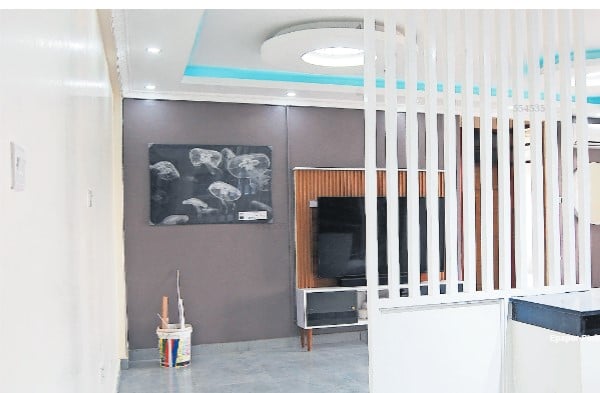Prime
When patches of your skin turn pink

Ogo Maduewesi, founder-cum-executive director Vitiligo Support and Awareness Foundation (VISTSAF) Nigeria.
What you need to know:
Disorder. A person has a vitiligo disorder when white or pink patches appear on different parts of the body. This happens because the cells that make pigment (colour) in the skin are destroyed. The cause of the destruction of the cells is not known.
Taban Mwesigye, 42, says he was 11 years old when he saw his skin colour change.
“It started with a small patch on the forehead and before I knew it had spread to other parts of the body,” says Mwesigye.
According to him, his parents did not care to know what it was since they were peasants who did not attend school. They thought it would go away with time so they ignored the first symptoms.
“They later on got concerned when they saw the colour of my hand turn pink so they rushed me to a herbalist who gave me herbs to drink, promising my parents that within a few days it would be gone,” he says. It persisted.
People, most especially the children in his village community, began to discriminate him because they thought that the disease was infectious.
This stigmatised him and he felt left out, but later on when his family members did not get affected, they began to associate with him freely.
“I only had one friend who was younger than me and he befriended me thinking that I was turning into a White. He usually called me Muzungu because of my skin colour” says Mwesigye.
Mwesigye gave up on seeking treatment and decided to live with the skin disorder because he knew that it could not be corrected. Although he now knows that it can be reversed, Mwesigye says he does not have money to treat the condition because he makes so little, which is just enough to sustain him and his family.
He says he would have treated it if it was infectious because he would not want anyone to suffer from the same ailment but since it is not, he may treat it in future when he gets extra money on his hands.
Doctor’s advice on how to treat patients with vitiligo
Do not discriminate the person
Encourage them to embrace their new look
Give them the care and advice they need
Find a doctor who can treat the disease then take the patient for treatment and make sure the doctor also helps them cope with their emotional breakdown
Help them make the decision concerning their medical care and also participate by encouraging and reminding them to take their medication
Procedures
Dr Malik Ssempereza, a director and skin doctor at Unity Skin Clinic at Acacia mall emphasises that vitiligo is a skin disorder not a disease.
“This disease happens when your immune system mistakenly attacks some part of your own body. It is also possible that one or more genes may make a person more likely to get the disorder,” says Ssempereza.
He says people, most especially those in rural areas, are not aware that vitiligo can be cured as long as it is detected on a person.
Dr Usama Kyazze of Clinix Hospital says melanin is important because it is the pigment that gives the skin its characteristic colour. If the melanin is lost, the person is likely to develop vitiligo.
According to Kyazze, vitiligo is caused by a loss of pigment in the skin due to destruction of pigment-forming cells known as melanocytes. The exact cause of the destruction of these cells is not known. One possible explanation might be that the body’s immune system destroys the cells.
How the patients are affected
“Most people hold a myth that vitiligo cannot be treated and some even go ahead to traumatise the patient thinking it is can be transmitted by sitting close to the person who has the skin disorder or even sharing an item,” says Ssempereza.
He says since it is painless and not infectious, most people tend to ignore treating the victims, forgetting that it affects them psychologically and also their social life in the community, work place and sometimes denies the person a right to marriage because they are discriminated.
Most vitiligo patients can turn aggressive, feel a sense of shame, become withdrawn and resentful due to their skin difference and sometimes the psychological torture they inflict upon themselves and that got from the people around them.
Treatments available
In most cases the people diagnosed with vitiligo are given creams, sunscreens that can help bring back their skin colour. Currently, four options are available for the treatment of vitiligo and these are: sunscreens, cover-up, restoration of normal skin colour and bleaching of normal skin with topical creams to remove the patches caused by the skin disorder.
Who can get the disease?
Dr Kyazze says vitiligo affects all races equally but it is more noticeable in dark-skinned people because of its sharp contrast with the dark skin complexion.
He says it develops early in life, between the ages of 10 and 30 years and does not discriminate against any sex; both men and women are likely to develop vitiligo.
Vitiligo may run in families; those with a family history of vitiligo or premature greying of the hair are at an increased risk of developing vitiligo. Other risk factors that increase one’s chances of developing vitiligo include having auto-immune diseases.




